A look at the history of human civilisation shows it has been replete with violence stemming from ethnic hatred, linguistic differences, and religious wars and conversions through brutal tortures. Of the three, religion and war have gone hand in hand in human history for the longest time. Religious armies go to wars after prayers with the firm belief that God is by their side; and in history it has been often seen that in a religious war the losing side is brutally forced to convert to the winner’s religion. [caption id=“attachment_10319571” align=“alignnone” width=“640”] 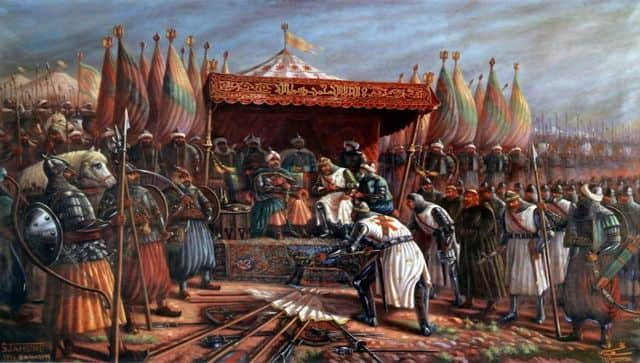 Religious war between Saladin (Isalm) and Guy of Lusignan (Christianity), Battle of Hattin of 1187[/caption] However, praying and having firm faith in God does not necessarily make a war religious in nature. For a holy war, religion has to be at the core of the fighting spirit, and it will be the chief ideological basis of the war. Religious wars show three basic characteristics:
- There is a fixed religious goal (often a long-term one that doesn’t end with few wars) that needs to be achieved,
- The war has the backing of a popular religious or spiritual leader, and
- There are the promised real or spiritual rewards for those that fight and those that die fighting.
In ancient and medieval times religious wars were fought on battlegrounds (e.g. Crusades in Europe, and the invading Islamic armies or the Islamic rulers leading wars against Hindu kingdoms in medieval India). In modern times the religious fights have metamorphosed into a more complicated and indirect type of wars that doesn’t necessitate one to go waving a sword into battlefields to kill infidels. It often involves the use of the dark world of the internet underbelly, and psychological warfare through propaganda narratives spread constantly via media and academia that aim at brainwashing the so-called ‘non-believers’ into subjugation. Of course, as the ‘educated’ terrorists embedded within the media and academia circles do the psychological warfare, the religious foot soldiers on ground carry on with the bloodshed and brutalities of a medieval era religious battlefield. [caption id=“attachment_10319591” align=“alignnone” width=“640”] 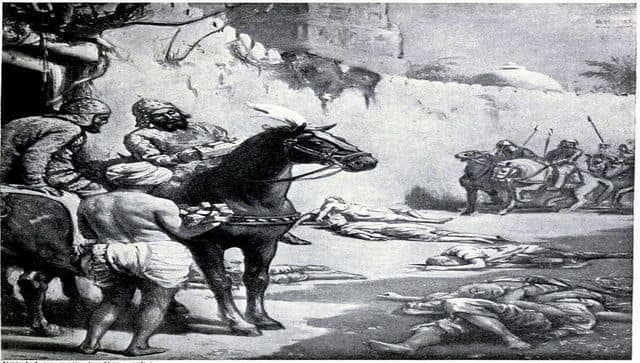 The image, in the chapter on India in Hutchison’s ‘Story of the Nations’ edited by James Meston, depicts Islamic invader Bakhtiyar Khilji’s massacre of Buddhist monks in Bihar. Khilji destroyed the Nalanda and Vikramshila universities.[/caption] Genocide (both of the religious and non-religious types) is another topic that appears frequently in the world history, and among some of the infamous ones are the Jewish genocide in Germany under the Hitler regime, and mass killings under Communist rule in China and the USSR. However, what catches the eye is the missing discourse on Hindu genocide in world history, which if viewed neutrally, will possibly stand out as the longest and among the worst genocides ever perpetuated in human history. Hindu genocide had started long back in the Indian subcontinent with the arrival of the Islamic invaders and later evangelists from Europe (Goa inquisition). Hindu oppression and persecution (amounting to genocide) continues unabated to this day in nations such as Pakistan and Bangladesh. This article will take a look at the Hindu genocide in Bangladesh between 1947 and 1971, which continues until date, that somehow majority of the human rights activists across the world love to ignore, or even worse, try to whitewash and dilute the gravity of the genocidal crimes with unsubstantiated data. [caption id=“attachment_10319611” align=“alignnone” width=“640”]  An 18th Century French sketch showing a man condemned to be burnt alive by the Goa Inquisition. The stake is behind him to his left, the punishment is sketched on his shirt. It was inspired by Charles Dellon’s persecution. Currently displayed at the LACMA[/caption] Bangladesh and Hindus The recent spate of communal hatred and violence seen against the Hindus in Bangladesh (during the 2021 Durga Puja) which led to widespread vandalism, loss of lives and property is not an isolated, one-off incident. Hindus in Bangladesh have been facing this hatred and severe persecution from the 13th Century when foreign Islamic rule slowly made its way in the region with a completely different set of culture and religious rivalry. What started in the 13th Century has not only continued, but modified itself to suit the modern political framework and other administrative systems. [caption id=“attachment_10319631” align=“alignnone” width=“640”]  1813 Map of undivided Bengal[/caption] The carving out of Pakistan, of which Bangladesh remained a part from 1947 until 1971, resulted from the demands for a separate homeland by the Muslims of the Indian subcontinent. Later, based on linguistic differences (Urdu imposition), a movement was started in Bangladesh for separation from Pakistan, and with the help from the Indian Army that became a reality in 1971, when Bangladesh was born as a separate nation. While initially secularism was officially adopted as a state principle, soon Islam reemerged as a strong power, and Bangladesh was fast enough to discard the façade of secularism and favour Islam. The Pakistan movement, which started during 1940s under the Muslim league leadership, unleashed a reign of horror in undivided Bengal just before the 1947 Partition. The extremely brutal ‘Calcutta Killings,’ also known as the ‘Direct Action Day riots’ led to ghastly deaths of hundreds of innocent civilians, mostly Hindus. This was followed by another equally terrible carnage known as the ‘Noakhali Riots,’ where Hindus faced uncontrolled murders, brutal rapes, lootings, evictions, and forced conversions. Bihar too faced a similar violent situation, after which Bengal Partition was deemed inevitable based on religious lines. Once divided on communal lines in 1947, the Hindus who chose to remain in Bangladesh had to live under the domination of the Islamic nomenclature of Pakistan, which reserved the Head of State only for Muslims, a situation that did not change even after the 1971 independence of Bangladesh. The steady decrease in percentage of Bangladeshi Hindus, as evident from the census figures, are clear indicators of the persecution faced by the Hindus in the anti-Hindu hostile atmosphere prevalent in Bangladesh. Professor Abul Barakat of Dhaka University in his book, The Political Economy of Reforming Agriculture: Land Water Bodies in Bangladesh (2016), says: “There will be no Hindus left within Bangladesh within 30 years… [as} the rate of the exodus over the past 49 years points to that direction.” Professor Barakat has found that almost 11.3 million Hindus were forced to escape from Bangladesh owing to religious persecution from 1964 to 2013.
| Year | Percentage (%) | Hindu Population | Total population | Notes |
|---|---|---|---|---|
| 1901 | 33.00 | 9,546,240 | 28,927,626 | Undivided Bengal |
| 1911 | 31.50 | 9,939,825 | 31,555,363 | Undivided Bengal |
| 1921 | 30.60 | 10,176,030 | 33,254,607 | |
| 1931 | 29.40 | 10,466,988 | 35,604,189 | |
| 1941 | 28.00 | 11,759,160 | 41,999,221 | |
| 1951 | 22.05 | 9,239,603 | 42,062,462 | Post partition under Pakistan period |
| 1961 | 18.50 | 9,379,669 | 50,804,914 | |
| 1974 | 13.50 | 9,673,048 | 71,478,543 | After independence of Bangladesh |
| 1981 | 12.13 | 10,570,245 | 87,120,487 | |
| 1991 | 10.51 | 11,178,866 | 106,315,583 | |
| 2001 | 9.60 | 11,822,581 | 123,151,871 | |
| 2011 | 8.54 | 12,730,651 | 149,772,364 |
Source: Census of India 1901-1941, Census of East Pakistan 1951-1961, Bangladesh Government Census 1974-2011 (Table via Wikipedia) In the Great Calcutta killings, the then Mayor of Calcutta, Syed Mohammed Usman wrote in a pamphlet, “We Muslims have had the crown and have ruled. Do not lose hearts, be ready and take swords. Oh kafir! Your doom is not far” (ref: Yasmin Khan, “The Great Partition: the making of India and Pakistan, 2017, p 64). This was supported by Husseyn Shahid Suhrawardy, the then Bengal chief minister, who in his speech indirectly promised no actions to be taken against the armed Muslims should they decide to unleash their activities in the city (Yasmin Khan, ibid, p 65). DN Panigrahi, the author of India’s Partition: The Story of Imperialism in Retreat, also confirmed the inaction of police and army on that ghastly day when unabated killings and rapes went on for 48 hours, after speaking to a foreign journalist present in Calcutta on that day. It is said that the army was brought in only after it was felt that the Europeans might be attacked, showing the collusion between the League and the British colonial government. The Calcutta killings soon started a chain of uncontrolled violence and strategic organized communal violence targeting Hindus across many places (Bihar and Bangladesh). In the Noakhali killings that followed the Calcutta killings, the violence was specifically started on the auspicious day of Kojagori Lakshmi puja, and resulted in more than 5,000 dead, hundreds of brutal rapes, kidnappings of women, loot, and arson spread across 200 square miles for several weeks (Yasmin Khan, 2017). Post-Partition, the Hindu persecution and communal violence in Bangladesh did not stop and continued unabated, wherein often all members of Hindu villages would be exterminated and the women raped and mutilated before killing. [caption id=“attachment_10319651” align=“alignnone” width=“640”] 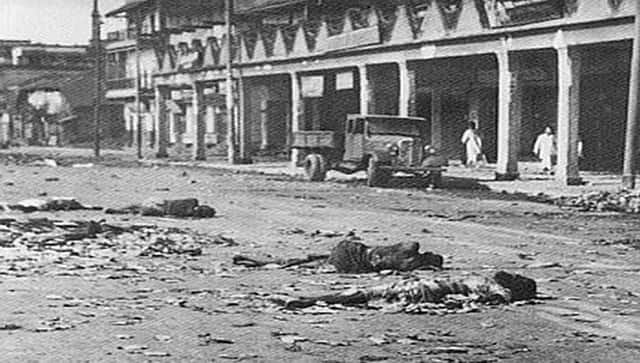 Bodies lying on roads in the Calcutta Killings also known as Direct Action Day[/caption] The 1971 Hindu genocide On 25 March, 197,1 the Pakistan Army on President Yahya Khan’s orders unleashed a trail of horror, which would continue until its final surrender to the Indian Army (17 December 1971). The terror unleashed by the Pakistan Army resulted in around 10 million Bangladeshi refugees crossing over to India (Senator Edward Kennedy’s report to the US Senate Judiciary Committee), and three million dead as reported by various humanitarian agencies and the Bangladesh government official estimate. Of the stated 10 million refugees, eight million who escaped to India were Hindus (Kennedy’s report, p. 19). [caption id=“attachment_10319661” align=“alignnone” width=“640”] 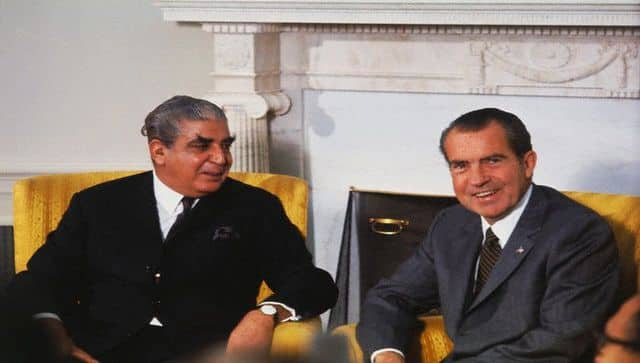 Pakistan president Yahya Khan with US president Richard Nixon in October 1970 — one ordered the Hindu genocide and the other remained silent[/caption] Senator Edward Kennedy in his report dated 1 November, 1971, wrote: “Field reports to the US Government, countless eye-witness journalistic accounts, reports of International agencies such as World Bank and additional information available to the subcommittee document the reign of terror which grips East Bengal (East Pakistan). Hardest hit have been members of the Hindu community who have been robbed of their lands and shops, systematically slaughtered, and in some places, painted with yellow patches marked “h”. All of this has been officially sanctioned, ordered and implemented under martial law from Islamabad.” [Ref- Crisis in South Asia - A report by Senator Edward Kennedy to the Subcommittee investigating the Problem of Refugees and Their Settlement, Submitted to U.S. Senate Judiciary Committee, 1 November, 1971, U.S. Govt. Press, pp.6-7] Sydney Schanberg, a reputed journalist with the New York Times, was in Dhaka in 1971 covering the Pakistan Army oppression and the Bangladesh independence war. He wrote a column titled “The Pakistani Slaughter That Nixon Ignored”, where he stated “I covered the war and witnessed first the population’s joyous welcome of the Indian soldiers as liberators… Later I toured the country by road to see the Pakistani legacy firsthand. In town after town there was an execution area where people had been killed by bayonet, bullet and bludgeon. In some towns, executions were held on a daily basis…. human bones were still scattered along many roadsides. Blood stained clothing and tufts of human hair clung to the brush at these killing grounds. Children too young to understand were playing grotesque games with skulls. Other reminders were the yellow ‘h’s the Pakistanis had painted on the homes of Hindus, particular targets of the Muslim army.” (This was after the war had ended) [caption id=“attachment_10319681” align=“alignnone” width=“640”] 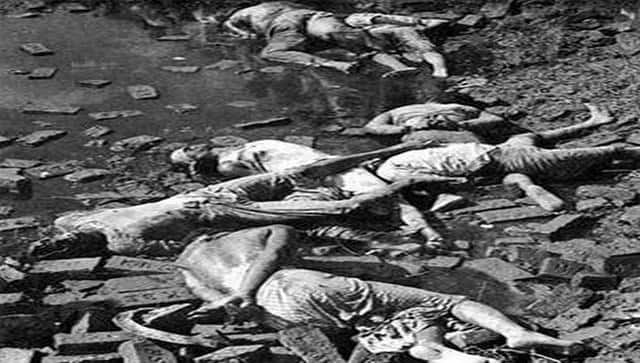 Bodies of Bangladeshis (primarily Hindus), a genocide perpetuated by the Pakistan Army[/caption] It is estimated by various experts that roughly 2.4 million Bengali Hindus were killed in the 1971 Bangladesh war of independence, of which most remain unreported. The communal violence against Hindus in Bangladesh did not end in 1971, and it continues until this day, as evident from the recent attacks during the 2021 Durga Puja. The sharp slide in Hindu population in Bangladesh stands as a mute testimony of this unending communal persecution. It is now essential that the true history and documentation of Hindu genocide and ethnic cleansing of Hindus in the Indian subcontinent be made, in order to make the future generations aware of the actual happenings. Like the Jewish Holocaust Memorial, it is time a Hindu Holocaust memorial be made too in memory of those Hindus who have been killed and raped for just being Hindu. The author is a well-known travel and heritage writer. Views expressed are personal. Read all the Latest News , Trending News , Cricket News , Bollywood News , India News and Entertainment News here. Follow us on Facebook, Twitter and Instagram.


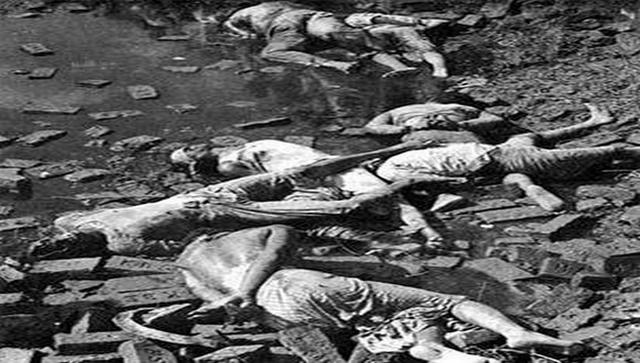)

)
)
)
)
)
)
)
)



